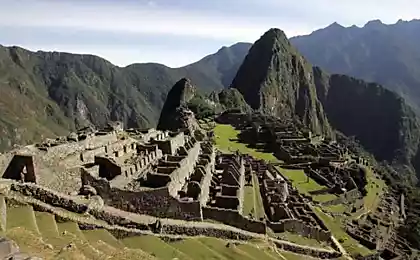1242
Mysterious prehistoric sites
In the world there are hundreds of mysterious places and objects, the mystery that scientists are trying to solve for decades. Stone circles, plates, deities, temples - all of these centuries-old historical values are unique and give us the opportunity to go back in time - to the origins of human civilization.
Carnac stones. France
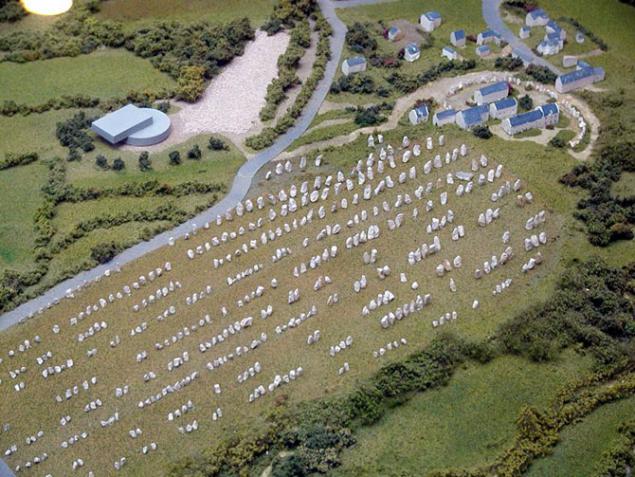
Carnac stones - a collection consisting of more than three thousand standing stones around the French town of Carnac in Brittany. Stones were established between 4500 and 3300 BC There are many theories about the purpose of the installation of these stones. Some argue that the stones are related to astronomy and represent observatory. Other scholars argue that the stones were used as primitive seismic instruments to determine the earthquake.
Unfinished Obelisk. Aswan Egypt
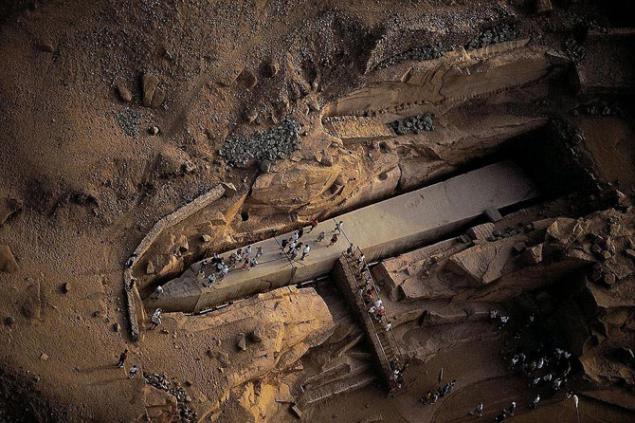
In the ancient quarries near Aswan, is a giant piece of stone, which was designed to create the obelisk. The obelisk was not completed, probably because of the cracks that formed in quarries (some believe that the work on the creation of the obelisk was interrupted by force). The sheer size of this impressive obelisk. The obelisk - 42 meters, weight - 1,200 tons. For a more vivid representation of the height of the obelisk - imagine a 10-storey building. For the transportation of such an object is suitable not for each valve. How to transport the obelisk going Egyptians - a mystery.
Antequera. Spain

The three most important dolmen (or passage mounds) in Spain - Cueva de Menga, Cueva de Viera and El Romeral Tholos - are among the largest in the world. The largest stones used in their construction, weighs 180 tons, and were transported to a place that is at least a mile away. The unique design was founded around 3700 BC Many walls have anthropomorphic illustrations.
Ggantija. Malta

Ggantija is a complex of two megalithic temples on the Maltese island of Gozo. Stone churches were built around 3600 BC, making it the second oldest religious structure ever found, immediately after Gebekli Tepe. It should be borne in mind that at this time does not have any metal tools and has not yet been invented wheel. It is believed that Ggantija - a place of worship of fertility, as there have been found figurines and statuettes associated with fertility.
Stone spheres. Costa Rica
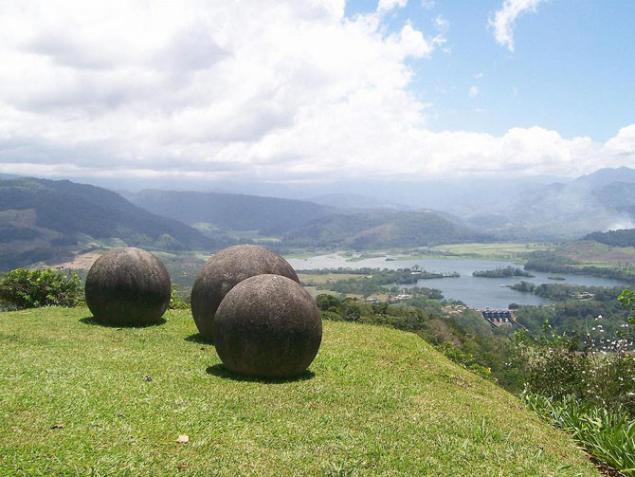
The collection, consisting of more than 200 stone spheres ranging in size from a few centimeters to 2 meters, was found in Costa Rica. Sphere is believed to have been carved between 1500 and 500 BC A more precise dating - is impossible. There are many legends associated with the collection of stone. So, one of them says that they are relics of Atlantis. Another legend says that the creators had a potion, softening rock.
The heads of the Olmecs. Mexico
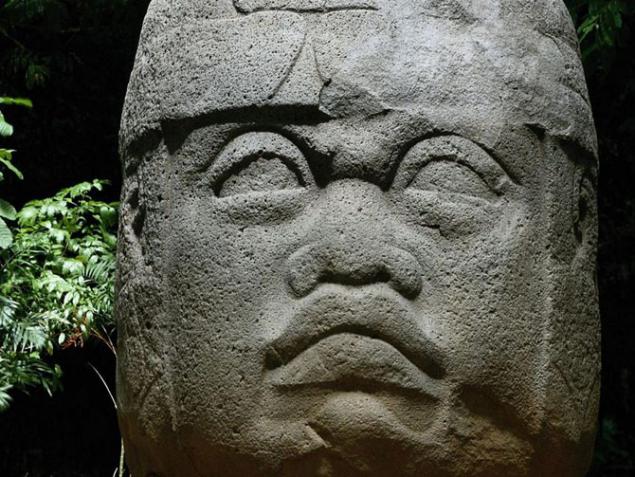
The heads of the Olmecs - collection consisting of 17 colossal heads carved from stone. The collection was created about 1500-1000 BC, and each head weighs between six and fifty tons. Each head has carved out a unique piece, which is why some people believe that they were powerful rulers of the Olmec.
Yonaguni Monument. Japan
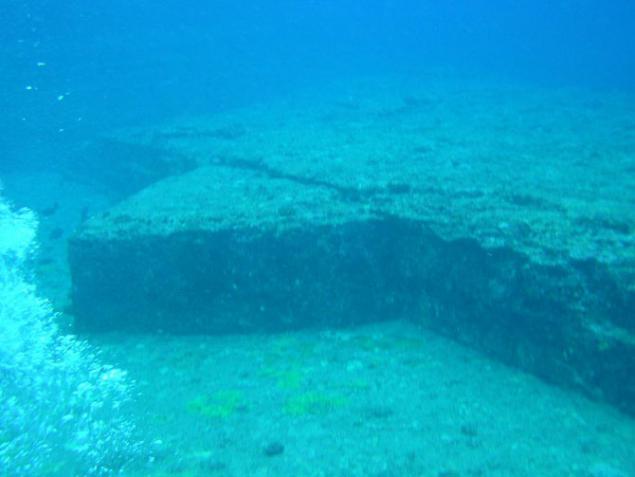
In 1987 he was discovered by a group of underwater formations off the coast of Yonaguni Island. These formations have flat edges parallel angles and columns. The area where you found the design was the land during the last Ice Age: 8 to 10 thousand years ago, so if Yonaguni really was built by people, it is one of the oldest buildings in the world.
Gulf of Cambay (Hambhat). India
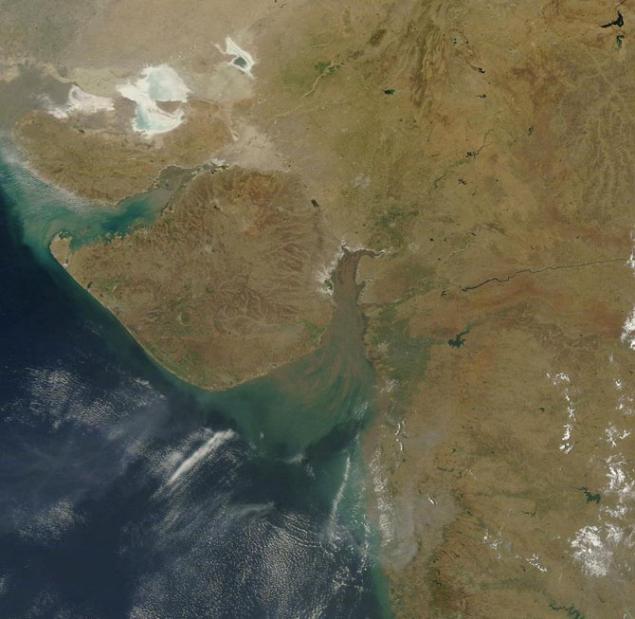
In 2001, off the coast of India, in the Gulf of Cambay, was found sunken city. Several artificial structures were determined using sonar. From the bottom were recovered many artifacts, including pottery shards, figurines, ornaments. Perhaps the city has existed since 9500 BC e. If it did exist then it thousands of years older than the oldest cities of India - Varanasi.
Moai. Easter Island
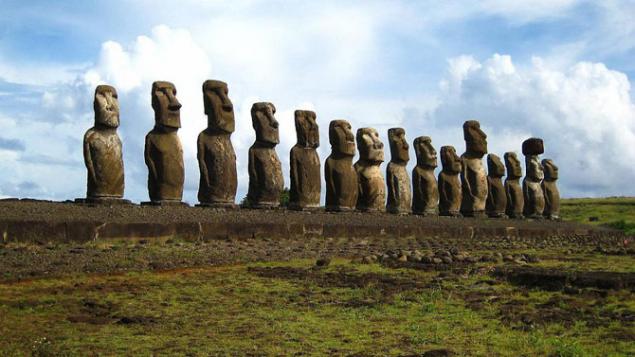
On Easter Island, one of the most remote inhabited island in the world, is one of the most famous mysteries of the world. Gigantic stone statues (moai) Easter Island is one of the world's most popular attractions among tourists. Historians, archaeologists are lost in conjectures - for what purpose were these statues and why they left unfinished. One of the wildest theories about Easter Island has it that the island is actually - the peak of a seamount and is all that remains of the lost civilization of Mu.
Gebekli Tepe. Turkey
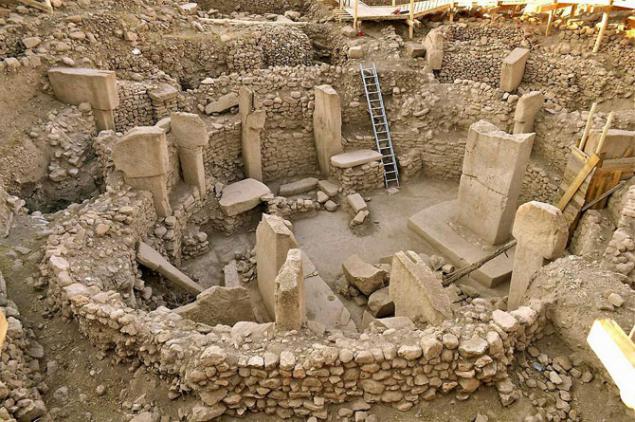
Gebekli Tepe, is considered one of the oldest religious structures ever found in the world. It is believed that the structure appeared between 10,000 and 9,000 years BC On stone pillars and structures can be seen carved predatory animals. The weight of some pillars reaches 20 tons. It is believed that Gebekli Tepe was built before the advent of agriculture, religion, literature, wheels, pottery, the domestication of animals. How this complex was built - a mystery, securely guarded time.
Carnac stones. France

Carnac stones - a collection consisting of more than three thousand standing stones around the French town of Carnac in Brittany. Stones were established between 4500 and 3300 BC There are many theories about the purpose of the installation of these stones. Some argue that the stones are related to astronomy and represent observatory. Other scholars argue that the stones were used as primitive seismic instruments to determine the earthquake.
Unfinished Obelisk. Aswan Egypt

In the ancient quarries near Aswan, is a giant piece of stone, which was designed to create the obelisk. The obelisk was not completed, probably because of the cracks that formed in quarries (some believe that the work on the creation of the obelisk was interrupted by force). The sheer size of this impressive obelisk. The obelisk - 42 meters, weight - 1,200 tons. For a more vivid representation of the height of the obelisk - imagine a 10-storey building. For the transportation of such an object is suitable not for each valve. How to transport the obelisk going Egyptians - a mystery.
Antequera. Spain

The three most important dolmen (or passage mounds) in Spain - Cueva de Menga, Cueva de Viera and El Romeral Tholos - are among the largest in the world. The largest stones used in their construction, weighs 180 tons, and were transported to a place that is at least a mile away. The unique design was founded around 3700 BC Many walls have anthropomorphic illustrations.
Ggantija. Malta

Ggantija is a complex of two megalithic temples on the Maltese island of Gozo. Stone churches were built around 3600 BC, making it the second oldest religious structure ever found, immediately after Gebekli Tepe. It should be borne in mind that at this time does not have any metal tools and has not yet been invented wheel. It is believed that Ggantija - a place of worship of fertility, as there have been found figurines and statuettes associated with fertility.
Stone spheres. Costa Rica

The collection, consisting of more than 200 stone spheres ranging in size from a few centimeters to 2 meters, was found in Costa Rica. Sphere is believed to have been carved between 1500 and 500 BC A more precise dating - is impossible. There are many legends associated with the collection of stone. So, one of them says that they are relics of Atlantis. Another legend says that the creators had a potion, softening rock.
The heads of the Olmecs. Mexico

The heads of the Olmecs - collection consisting of 17 colossal heads carved from stone. The collection was created about 1500-1000 BC, and each head weighs between six and fifty tons. Each head has carved out a unique piece, which is why some people believe that they were powerful rulers of the Olmec.
Yonaguni Monument. Japan

In 1987 he was discovered by a group of underwater formations off the coast of Yonaguni Island. These formations have flat edges parallel angles and columns. The area where you found the design was the land during the last Ice Age: 8 to 10 thousand years ago, so if Yonaguni really was built by people, it is one of the oldest buildings in the world.
Gulf of Cambay (Hambhat). India

In 2001, off the coast of India, in the Gulf of Cambay, was found sunken city. Several artificial structures were determined using sonar. From the bottom were recovered many artifacts, including pottery shards, figurines, ornaments. Perhaps the city has existed since 9500 BC e. If it did exist then it thousands of years older than the oldest cities of India - Varanasi.
Moai. Easter Island

On Easter Island, one of the most remote inhabited island in the world, is one of the most famous mysteries of the world. Gigantic stone statues (moai) Easter Island is one of the world's most popular attractions among tourists. Historians, archaeologists are lost in conjectures - for what purpose were these statues and why they left unfinished. One of the wildest theories about Easter Island has it that the island is actually - the peak of a seamount and is all that remains of the lost civilization of Mu.
Gebekli Tepe. Turkey

Gebekli Tepe, is considered one of the oldest religious structures ever found in the world. It is believed that the structure appeared between 10,000 and 9,000 years BC On stone pillars and structures can be seen carved predatory animals. The weight of some pillars reaches 20 tons. It is believed that Gebekli Tepe was built before the advent of agriculture, religion, literature, wheels, pottery, the domestication of animals. How this complex was built - a mystery, securely guarded time.



















